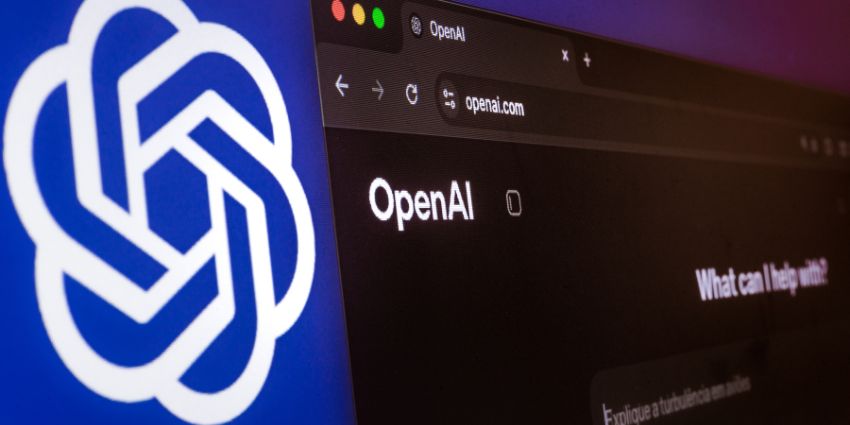Chances are, you’re already familiar with the concept of asynchronous collaboration—particularly if you’re running or working in a hybrid workplace. The evolution of modern unified communication tools, productivity apps, and project management systems has created a world where real-time collaboration is no longer the only option.
You don’t necessarily have to work the same hours as your colleagues or even be in the same office space to function as part of a productive team. However, it’s fair to say the nature of asynchronous collaboration has changed a lot in recent years.
We’re not just using message threads on Microsoft Teams, emails, and cloud-based documents to work together “asynchronously” anymore. Now we have solutions like Zoom Clips for asynchronous video conferencing. Soon, we’ll even have AI avatars that can step into meetings on our behalf, taking notes and responding to questions while we focus on other tasks.
So, what will the future of asynchronous collaboration look like in a world enhanced by AI? What are the benefits to this style of working, and how can we ensure we’re using asynchronous collaboration strategies effectively?
What is Asynchronous Collaboration?
If you’re unfamiliar, asynchronous collaboration refers to any “unscheduled” collaborative activity where team members contribute to a project simultaneously. With synchronous collaboration, all participants involved in a project need to be present and active during a specific timeframe.
For instance, a video meeting in which multiple people share ideas, add notes to a virtual whiteboard, and respond to queries simultaneously is a form of “synchronous collaboration.” With asynchronous collaboration, everyone gets involved with a project at a time that suits them.
For instance, everyone on your team might contribute ideas and comments to a shared document at different times when planning a future product release or creating a marketing plan.
The idea is that this form of collaboration allows participants to contribute to a team following their own schedule. This allows for more flexibility in the workplace, and can even help to reduce the number of meetings team members need to attend.
Solutions for asynchronous collaboration have been around for years. Most of us have communicated with a colleague via email or chat, rather than inviting them to a call or in-person conversation. Many of us are also familiar with using cloud-based productivity tools like Google Docs to work on projects with colleagues “asynchronously.”
However, as mentioned above, the technology powering asynchronous experiences has become more advanced in recent years. If you need to update your team on a project, you don’t have to rely on sending a lengthy email. You can record a video with a tool like Zoom Clips or Loom and even allow team members to annotate or comment on the recording.
The Benefits of Asynchronous Collaboration
Probably the biggest benefit of asynchronous collaboration in today’s world, is that it adheres to the nature of the flexible workplace. Today’s teams are distributed in locations all over the world, and they don’t necessarily work the same hours as their colleagues.
Asynchronous collaboration tools ensures that even when employee schedules don’t naturally overlap, teams can still work together effectively. It also reduces the need for endless meetings, and in-person interactions, potentially improving efficiency and productivity.
Studies have shown just how beneficial asynchronous collaboration can be. Asana’s Anatomy of Work Index found employees usually spend around 58% of their time on “work about work”, and engage in 129 hours of unnecessary meetings every year. Asynchronous collaboration can give employees more of their valuable time back.
Beyond that, asynchronous collaboration:
Improves Equity and Relationships in the Workplace
According to research from Lucid, around 56% of people believe that the loudest voice generally dominates every meeting. This means that when some employees attend meetings, they don’t feel capable of actually making their input “stand out”.
Asynchronous collaboration levels the playing field, giving everyone an equal chance to contribute. At the same time, while you might assume that face-to-face conversations in “real time” are the best way to strengthen relationships between employees, the reality is that bringing teams together for consistent “synchronous” work isn’t easy.
For employees working remotely, a heavy focus on “synchronous” work could mean they end up missing out on opportunities to really engage as “part of the team”. Asynchronous collaboration helps to ensure everyone stays connected, regardless of where or when they work.
Increases Innovation and Diversity
By removing the barriers of location and time, asynchronous collaboration paves the way for greater innovation. It ensures business leaders can capture diverse perspectives and insights from professionals all over the world, without having to worry about scheduling issues.
This paves the way to more diverse business environments too, and studies show that diversity significantly enhances a company’s performance. One report by the Boston Consulting Group showed that organizations with higher diversity generally earned 45% of their revenue through innovation.
Improves Team Morale
Asynchronous collaboration improves employee experiences and morale in numerous ways. First, it ensures that employees can actually take advantage of flexible and hybrid working schedules, without missing out on important experiences within the organization.
Asynchronous collaboration gives team members the freedom to work at a time and place that suits them. When staff member schedules aren’t dictated entirely by meetings and “in-person” interactions, they have more control over their to-do list.
Research shows that giving employees autonomy, and trusting them to manage their own schedules effectively, leads to improved job satisfaction.
Choosing Between Synchronous and Asynchronous Collaboration
Obviously, there are huge benefits to enabling asynchronous collaboration in the workplace, but it’s worth noting that asynchronous interactions aren’t ideal for every occasion. There are times when people do need to meet and share ideas face-to-face, at the same time.
Generally, if you’re wondering whether it makes sense to host a video meeting, or use tools like Zoom Clips, and Google Docs, ask yourself the following questions first:
- Is it urgent? Asynchronous collaboration might not be the best choice for urgent matters, as it does introduce some “latency”. If you need to deal with an issue as quickly as possible, it usually makes more sense to jump on a quick call.
- Is the topic sensitive? Conversations that might be emotional or sensitive in nature are generally best done face-to-face. If you need to be able to express yourself through body language, or allow people to ask questions quickly, stick to synchronous collaboration.
- How complicated is the project? Can you share everything you need to share with your team effectively through something like Zoom Clips? Or is the topic you’re collaborating on a little complicated to understand? If you anticipate a need for a lot of discussion, then it makes sense to organize a group meeting in real time.
The Best Activities for Asynchronous Collaboration
On a broad scale, any task that doesn’t need a real-time meeting or discussion is a great candidate for asynchronous collaboration. Some of the most obvious things teams can do asynchronously include:
- Starting a brainstorming session: People don’t necessarily need to be present in the same room at the same time to share thoughts and ideas. Instead of asking everyone to try and come up with ideas at once, create a shared document where everyone can make notes. After you’ve gathered some ideas, then you can arrange a meeting to discuss everything in depth.
- Assigning or explaining tasks: Unless you’re assigning a particularly complicated task to an employee, you can usually send them the information they need to get started asynchronously. You can even use tools like Zoom Clips or Loom to create video-based instructions with screen recordings, to ensure you’re giving your colleagues the right insights.
- Providing updates: Most quick updates, like project check-ins or news announcements, can be shared asynchronously. You can even use project management tools like Asana or Trello to update all of your team members on a project’s progress instantly. The only time you’re likely to need a synchronous meeting is if you anticipate questions from team members.
- Collecting feedback: If you want to gather some thoughts and insights from your team members about a new project or idea, you don’t always need a meeting. Sometimes giving your employees or colleagues the freedom to share their feedback at their own time will ensure they have more time to think about their responses and deliver better input.
Optimizing Asynchronous Collaboration in the Workplace
As solutions for asynchronous collaboration become more advanced, particularly with the rise of AI-powered solutions and video recording tools, we’re likely to see more companies building their own “async” strategies. The key to success is having a plan in place to ensure everyone can work effectively together in an era of flexible schedules.
Here are our top tips for success:
1. Build Your Asynchronous Collaboration Technology Stack
The first thing you’re going to need for a good asynchronous collaboration strategy is the right technology. The exact solutions you invest in will depend on the day-to-day tasks of your teams. First, you’ll need a collaboration or UCaaS platform, like Microsoft Teams, Zoom, or Google Workspace.
Make sure the solution you choose gives your teams multiple ways to communicate, with integrated voice and video conferencing features, chat tools, and even digital whiteboards or docs.
Alongside your UCaaS platform, you should also consider tools for:
- Video recording: Video recording tools like Zoom Clips and Loom are excellent for sharing in-depth messages and information with team members asynchronously. They deliver the “human” experience of a face-to-face meeting, without the scheduling issues.
- Project management tools: Project management tools like Asana, Jira, and Smartsheet are excellent for working asynchronously. They make it easy for teams to assign tasks, monitor deadlines, and track progress without the need for real-time meetings.
- Cloud based document sharing tools: Cloud-based tools like Google Docs and Microsoft OneDrive ensure it’s easy for team members to share information and knowledge at a time that suits them. They also allow teams to comment on tasks and add extra information at any time, without the need for a meeting.
2. Explore the Latest AI Innovations
As mentioned above, artificial intelligence is having a huge impact on the world of asynchronous collaboration. Tools like Microsoft Copilot and AI Companion can transcribe meetings and summarize conversations in seconds. This makes it easier to share information from a real-time conference with anyone in your team who might not have been able to attend themselves.
AI solutions like Asana Teammates, can assign tasks to employees, share notifications automatically about changes to tasks and priorities, and more. There are even AI tools that can translate information into different languages for remote team members located around the world.
Plus, solutions like the AI avatars rolling out for Zoom Clips make it easier to create in-depth content for asynchronous collaboration. With AI avatars, users don’t even need to appear in a “video clip” themselves, they can simply ask a digital twin of themselves to “host” a clip on their behalf.
3. Create Team Communication Policies
Once you have the right technology to enable asynchronous collaboration, the next step is getting everyone on your team on the same page about how they should collaborate and communicate in different circumstances. Start by evaluating your current communication scenarios.
Look at how frequently your team hosts synchronous meetings and collaboration sessions. Ask yourself whether all the meetings you currently schedule actually need all of your employees to be available and contributing at the same time.
Based on your evaluation of your current strategies, create policies that will guide employees on when it makes sense to actually schedule a meeting, or use a form of asynchronous collaboration. Give your team members examples of when synchronous collaboration makes sense (such as when lots of team members need to discuss a complex project).
For situations where asynchronous collaboration is an option, provide staff with best practice guidelines. Show them how they can use video recording tools and project management apps to improve alignment and make knowledge sharing simpler. Give them tips on how to ensure they include all of the right information in their messages to other team members, to improve clarity.
4. Rethink How You Define Productivity
To truly embrace asynchronous collaboration, many business leaders need to reconsider how they define “productivity” in the workplace. It’s still common for many managers to judge employee performance by how many meetings they attend.
It’s easy to assume that your staff members are “productive” if they’re present in every meeting and group conference. However, that’s not always the case. Instead of using hours worked or meetings attended as a baseline for tracking team engagement and productivity, measure the actual progress employees are making towards goals and how often they’re completing tasks.
A team member who only attends one out of four meetings a day may actually be more productive than their colleagues, because they have more time to focus on valuable work. Set clear “productivity” targets, and monitor the progress your team is making using the analytical tools in your project management apps and platforms.
If you notice that productivity and performance levels actually drop when your teams aren’t meeting in “real-time” as often, question why that may be. Do you need to rethink how you approach asynchronous collaboration, and prioritize more face-to-face sessions? Or is the problem with the tools your teams are using to collaborate asynchronously?
5. Keep Experimenting
Finally, embracing a new era of asynchronous collaboration may require some trial and error. It doesn’t necessarily mean you should never bring your teams together synchronously for any conversation. You’ll still need to pay attention to the impact that asynchronous strategies have not just on team performance, but on relationship building and engagement.
Source feedback from your employees and listen to their opinions on how you might be able to improve the way the workplace operates. Build on your strategy collaboratively, by paying attention to what works for everyone, and exploring the latest tools and innovations as they emerge.
Additionally, be open to the fact that different employees may have different preferences. Some of your team members may be happy to make asynchronous collaboration their “default” mode of work. Others might prefer to have more opportunities to interact with colleagues face-to-face in real-time.
There’s no one-size-fits-all approach to building the perfect collaborative workplace.
Get Ready for the Future of Asynchronous Collaboration
Asynchronous collaboration is a crucial part of the modern workplace. It’s a valuable tool for fighting back against meeting fatigue, improving diversity, and enabling flexibility. The key to success is being intentional and strategic with the way you approach this type of collaboration.
Don’t just cancel all of your meetings and leave teams to figure out how to stay connected on their own. Provide them with the tools and guidance they need to effectively choose when and how to collaborate asynchronously.







